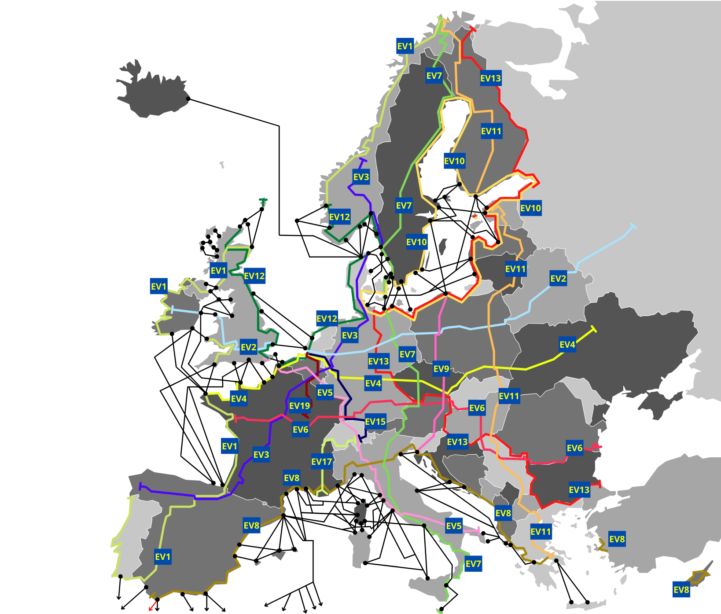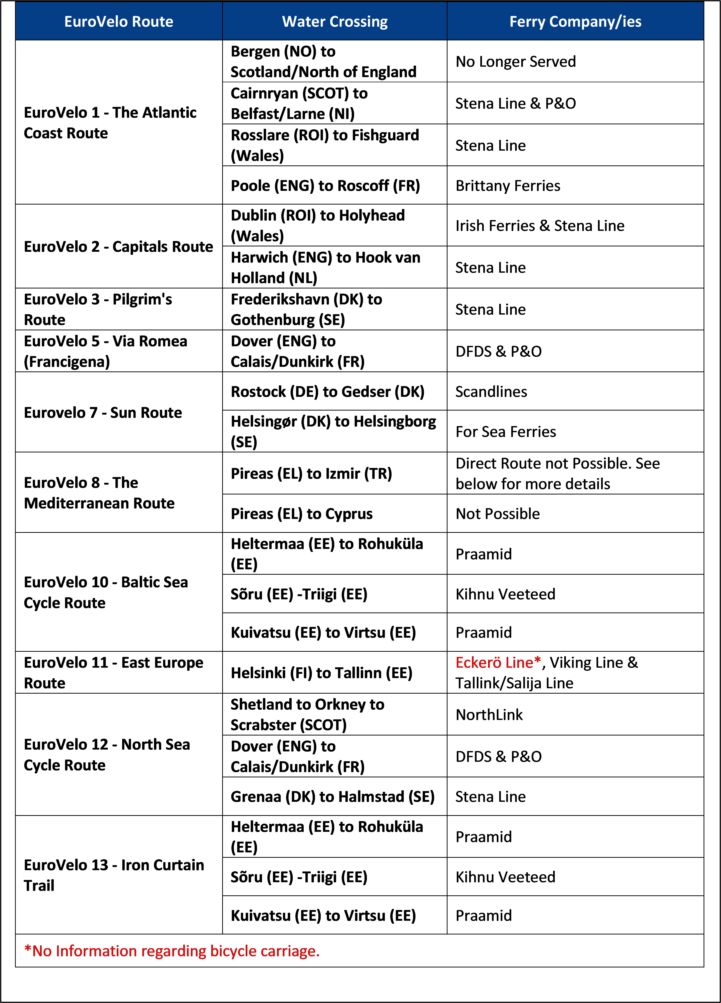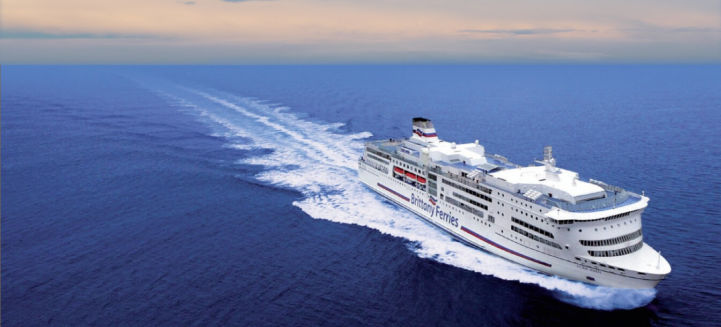Transport de vélos sur les ferries - mini-série Inter-modalité 1/3

Water can prove to be an significant obstacle for cyclists if there are no bridges or tunnels, or where they are, but cycling over them or through them is not permitted. In such circumstances, ferries can be a saviour. They can also offer a more relaxing way of crossing bodies of waters or provide an alternative to taking a flight to reach another destination. However, the European ferry network has changed a lot of the past decade with many services having been withdrawn. Even where services remain the carriage of bicycles is not always encouraged (e.g. accompanied by significant fee) or not even permitted in some cases.
As part of our #MoreCyclingTourism campaign, we will present over the coming months a mini-series on inter-modality on EuroVelo routes providing an overview of how you can combine traveling by bike with other modes of public transport: ferries, trains and coaches. In this article we will present the current possibilities of combining bikes and ferries following EuroVelo Routes and highlight what is needed to encourage these journeys in the future. In this article we are focusing on marine ferries although it is true that many of the river routes, such as EuroVelo 15 – Rhine Cycle Route or EuroVelo 19 – Meuse Cycle Route, include shorter ferry rides from one bank to the other.
Ferry connections on EuroVelo routes

A glance at the EuroVelo map shows that many of the routes will eventually take you over water. In fact, ten of the seventeen EuroVelo routes involve one or more sea-crossing points. EuroVelo 1 – Atlantic Coast Route is top of the list with four sea crossings in theory. This includes a relatively short ferry ride from Scotland to Northern Ireland or a five and a half hour trip across the English Channel between Plymouth in England and Brittany in France. On the other side of the continent, EuroVelo 10 - Baltic Sea Cycle Route includes ferry rides connecting to the Estonian islands Saaremaa and Hiiumaa and the Danish island of Bornholm.
ECF has researched a total of 62 marine ferry operators across Europe, ranging from small local companies to larger trans-sea operators. Check the table at right for an overview:
Advocating for more accessible carriage of bicycles on ferries
Spaces for bicycles on ferries are often very popular, especially in high season, but are not always encouraged by the operators. Accessing consistent information on the possibilities to travel with your bike on a ferry can also be hard to find as multiple transport providers and companies have different rules and regulations regarding bike travel, making planning difficult. Only 39 of the 62 operators researched provided explicit information regarding bicycle carriage.
Bicycle carriage in ferries is currently not covered under the EU ship passengers’ rights legislation, unlike the recently updated rail passengers’ rights legislation, which mandates a minimum of four dedicated bike spaces on all new and refurbished trains. This means that ferry and ship operators are not obliged to make the carrying of bicycles an option. ECF would nevertheless encourage the operators to meet the needs of cycling customers by offering:
- Dedicated safe and secure spaces for bicycle carriage,
- Sharing precise information both online and in the posts, such as on embarkation and disembarkation,
- Giving a clear online option for reserving a bicycle space
- Affordable prices.
Being able to easily take a bicycle on many different forms of public transport is vital for a sustainable way of travelling and a connected multi-modal European transport network and supports the booming cycle tourism industry. For the cyclists, a ferry ride will give you a well-deserved rest for a while and might make you find some like-minded people on board with whom you can share stories, experiences and tips.

Author: Antonia Tornow, with contributions from Charles Carnegie
Cover picture: Bikeparking on ferry, ©Allie Verbovetskaya